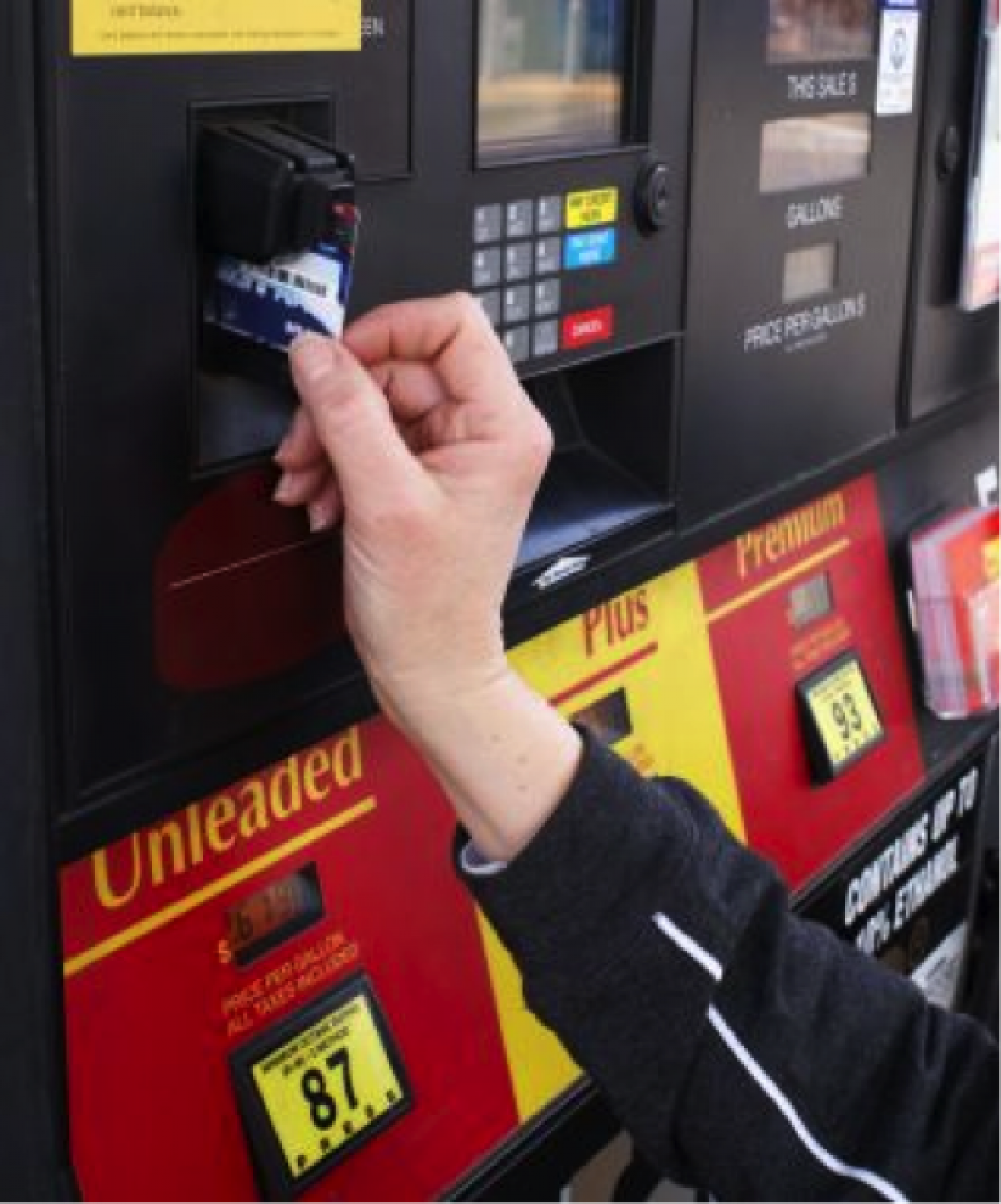Credit Card Skimming at the Gas Pump
Skimming relies on sophisticated data-reading electronics that copy the magnetic stripe information from your credit or debit card.
Keeping your credit card safe can be trickier than you think. I personally have had my credit/ debit card stolen twice in the last month. If you’re one of millions of people this happens to every year, you understand the frustration. I consider myself lucky that there were only two charges made before my bank noticed and contacted me. I say “lucky” because a lot of people have lost much more. It’s time-consuming enough filling out paperwork to get your money back and dispute the charge, but then you have to wait for your new card to arrive. If that wasn’t enough to drive you mad, you then have the pleasure of changing any automatic bill-paying that you may have had set up with that account.
The first time it happened, I have no idea how my card was compromised, but there were inexplicable charges on my account. The credit card company could not give me any hints as to where or how this could have happened. Naturally, after this incident, I became much more aware where and how I used my new card. When it happened the second time, I was able to figure out where my information was was stolen: by a card skimmer at the pump of a national gas station chain.
Skimming is a form of high tech fraud. It relies on sophisticated data-reading electronics that copy the magnetic stripe information from your credit or debit card. It can capture both your card number and your PIN. And it's happening at restaurants, neighborhood gas pumps, and ATM machines all over the country.
The criminal gains access to the machine in question and slips an electronic magnetic strip reader over the existing card slot at an ATM, or replaces a point-of-sale device. When you slide your card in the reader slot, the skimming device reads it first, and then the actual card reader does—at which point the transaction proceeds as expected. But now a crook has an exact copy of your card data without your even realizing it.
Older card-skimming devices required criminals to return and collect the information periodically, exposing them to risk of discovery. But newer skimmers can broadcast the card data to the thieves either by short-range Bluetooth capability or by GSM cellular technology. This enables the thieves, who may be sitting in a car nearby or in a building on the other side of the planet, to capture account numbers live as the account holder makes a purchase or a withdrawal.
When speaking to the store manager at the location where my card information was stolen, I was told that the problem had become so serious that they now check their pumps for tampering every few hours.
Gas stations may be the most vulnerable outposts. Pumps today are largely automated to allow customers easy 24-hour-access, but this means they are often left unattended, giving criminals plenty of opportunity to embed skimming devices in them late at night. In 2010, a law enforcement investigation found that 180 gas stations from Salt Lake City to Provo, Utah, had skimmers inside their pumps. Every day similar reports are made all over the country.
Of course you can't stop buying gas or enjoying a meal out on the town. But there are ways to be more aware in order to better protect yourself and your information. Here are a some helpful tips:
1. If you have the choice, always use your card inside at the register rather than pay at the pump.
2. Choose ATMs and gas stations in well-trafficked areas or those that are in view of a clerk or attendant at all times. It's harder for a thief to access a supervised machine.
3. When you pay at the pump with your debit/credit card, you usually have the option to use it as a credit or a debit card. It's best to choose the credit option that allows you to avoid entering your PIN.
4. Wiggle the card reader and make sure that it's securely attached to the ATM or pump. If it gives, it may not be a legitimate piece of the machine.
5. Check for glue on the face of the machine, and look for plastic overlays over keypads. If you find glue or glue residue around the corners, avoid that ATM or pump and report it.
6. Check your bank and credit card statements carefully and regularly to spot anything out of the ordinary. Report any questionable purchases immediately to your bank or credit card company.

 Member Connect
Member Connect